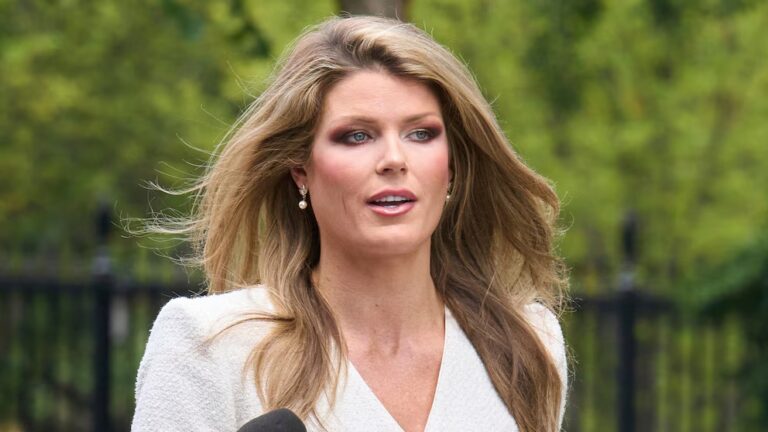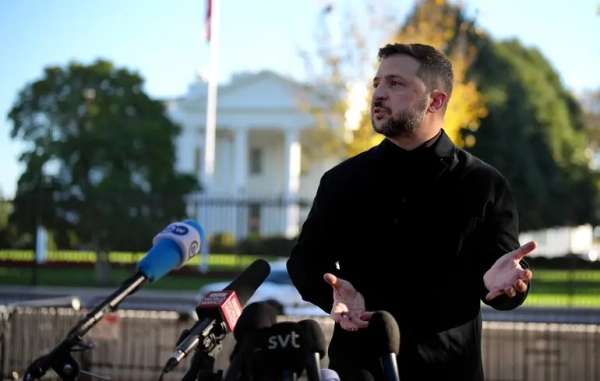The Supreme Court's most senior conservative, Justice Clarence Thomas, and its most senior liberal, Justice Sonia Sotomayor, both rose from humble beginnings to join the elite ranks of Yale Law School — and both have publicly credited race-based affirmative action initiatives with helping them get there.
But both justices have now staked out starkly opposite positions on whether the policy should be allowed to continue, facing off in a pair of blockbuster cases that will be decided this month and address the future of race in college admissions.
"Even as these people have very similar experiences across the board, the way that they react to them is radically different," said Leah Wright Rigueur, an associate professor of history at Johns Hopkins University who specializes in race, politics and civil rights.
"Both had radicalizing experiences with racism and discrimination, and if it's true that those radicalizing experiences can push someone to the left, then it's also true that those radicalized experiences can push someone to the right," she said.
The justices' deeply personal experiences will share the spotlight when the court's latest written opinions on affirmative action are handed down.
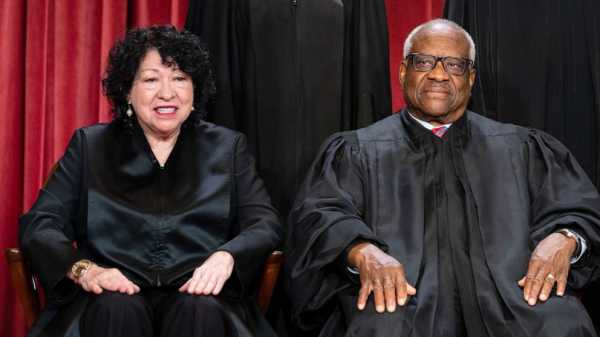
Associate Justice Sonia Sotomayor, left, and Associate Justice Clarence Thomas during the formal group photograph at the Supreme Court in Washington, DC, Oct. 7, 2022.Eric Lee/Bloomberg via Getty Images
"Their positions are really the epitome of the nuanced argument that we've been having around affirmative action for decades in this country," said Sarah Isgur, an ABC News legal contributor and former Justice Department attorney.
In many ways, Sotomayor and Thomas' disagreement mirrors public opinion, Isgur said, with polls showing a strong majority of Americans both supporting the promotion of diversity on college campuses while also opposing explicit consideration of the race of student applicants.
MORE: College students on affirmative action, race and admissions: In their own words
"The divide is why states like California and Michigan — which are not red states — have banned affirmative action many years ago now," Isgur added. "It's because both sides make compelling points."
Thomas, the court's only Black man, grew up poor in still-segregated rural Georgia before getting accepted to Yale Law School in 1971.
"The effort on the part of Yale during my years there was to reach out and open its doors to minorities whom it felt were qualified," Thomas testified during his 1991 Senate confirmation hearing, "and I took them at their word on that, and I have advocated that very kind of affirmative action."

Associate Justice Clarence Thomas during the formal group photograph at the Supreme Court in Washington, DC, Oct. 7, 2022.Eric Lee/Bloomberg via Getty Images, FILE
Just five years later, Sotomayor, who would become the court's first and only Latina member, tread a similar path to Yale from the Bronx in New York City.
"[It was] one of the poorest neighborhoods in the United States when I was growing up," Sotomayor said last year during a discussion at the Ronald Reagan Presidential Foundation. "And yet none of those challenges have stopped me reaching where I have, and I attributed all of it to my education."
Sotomayor has called the use of race in college admissions an extension of the civil rights movement of the 1960s.
"Schools were saying, 'We're not diverse. We're not giving opportunity to people from different backgrounds. That's important for the society,'" she said in a 2014 appearance at Yale, discussing the origins of affirmative action.
"Without affirmative action, I couldn't even have participated in the race of a good education because I didn't even know that there was a race being run," Sotomayor said.
In a series of decisions over 40 years, the Supreme Court has reaffirmed that schools can consider race in deciding which students to accept, endorsing the idea that a richly diverse learning environment on campus benefits all students.
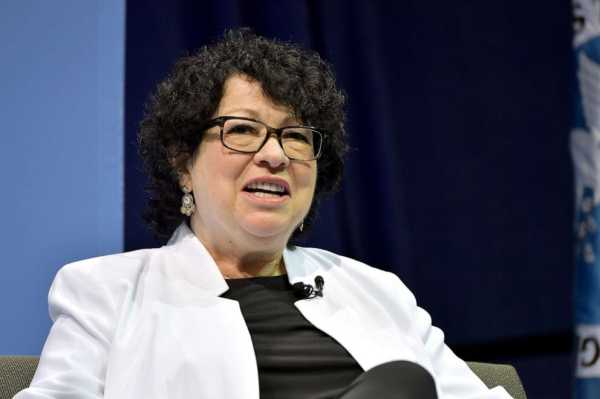
Supreme Court Justice Sonia Sotomayor speaks at Tufts University on September 12, 2019 in Boston.Paul Marotta/Getty Images, FILE
"The court determined that the law school's use of race as only one factor among many others, with no presumption of admission whatsoever, was appropriate under the circumstances," Sotomayor said during her 2009 Senate confirmation hearing.
But now, the high court's new conservative majority — led by Thomas — appears ready to change course.
"By and large what they're going to say is that race itself cannot be a determinative factor in one's admission because a benefit to one race, quote unquote, is a detriment to another," Isgur predicted.
Thomas has for years been the justice most publicly outspoken against affirmative action.
"Once again, it's the elites. I mean, they're telling us what we need," he lamented of affirmative action programs in an appearance last year at a conservative legal conference.
But Thomas once seemed to support the necessity of race-conscious programs.
"I have initiated affirmative programs, I have supported affirmative action programs. Whether or not I agree with all of them, I think, is a matter of record. But the fact that I don't agree with all of them does not mean that I am not a supporter of the underlying effort," he testified during his 1991 Senate confirmation hearings.
As the only Black student in his boarding school seminary class, Thomas was later encouraged to apply to the College of the Holy Cross in 1968 and given a scholarship for racial minorities.
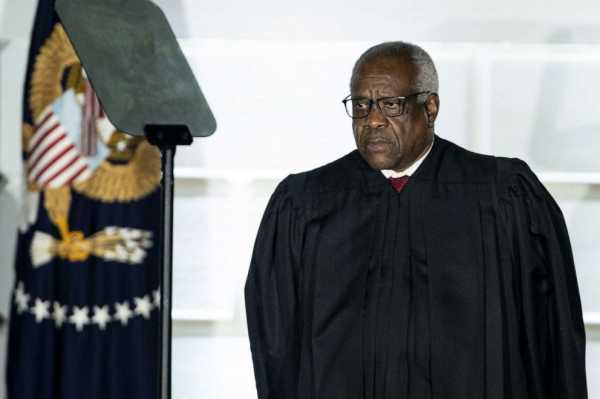
Clarence Thomas, associate justice of the U.S. Supreme Court, listens during a ceremony on the South Lawn of the White House in Washington, D.C., Oct. 26, 2020.Al Drago/Bloomberg via Getty Images, FILE
"I don't think anyone who was a beneficiary of that, of those programs or that action, should apologize for it," said Vincent Rougeau, president of Holy Cross and the school's first lay and first Black leader.
"Clarence Thomas was a great student here. I mean, he was highly admired and respected," Rougeau said, "and I have the deepest respect for his accomplishments and for his work at Holy Cross in terms of fighting for racial justice here."
Thomas graduated with honors in the top 2% of his class, going on to Yale Law School at the same time it was openly recruiting more minority students.
"There's a real pressure on us to be in boxes, and I would not be kept in a box during segregation, and I don't like boxes now," Thomas told ABC News in a 2007 interview. "I think that's quite unfortunate. I wasn't raised that way. I was raised trying to get out of them."
Looking back on his experience, Thomas now calls affirmative action paternalistic — criticizing it in his dissents as a "faddish theory" that stigmatizes minorities, even if it extends an opportunity.
"One of the things that would happen when I was nominated to the court [was that people would assume] that I couldn't possibly be as good as the white Yale graduates, because I obviously went to Yale because of the color of my skin," he said in 2007.
"He's saying that affirmative action hurt him overall, and that as the only Black member of the court, he's an important and unique voice on that front," Isgur says now.

Supporters pose for a group photo during a rally in support affirmative action policies outside the Supreme Court in Washington, D.C., October 31, 2022.Eric Lee for The Washington Post via Getty Images, FILE
Some of Thomas' critics see hypocrisy.
"That's an absolutely fair criticism. He'd argue that he's evolved, that his thinking has changed. And we do know, particularly when it comes to affirmative action, that people's opinions change all the time," said Rigueur.
"What I do see, however, somebody like Justice Clarence Thomas … is deeply cynical about the process. Justice Sotomayor takes a very different approach," she said.
Sotomayor, who has publicly praised Thomas as a colleague and friend, described their difference of opinion as philosophical and foundational.
MORE: Ketanji Brown Jackson's candid 2007 take on Justice Clarence Thomas: 'I don't understand you'
"It's between the image of the person who pulls themselves up by the bootstraps and the person who believes that you need a lift to get you up sometimes," she said at the Aspen Institute in 2017.
The contrast was on full display during oral arguments last year in a pair of cases that pit Harvard University and the University of North Carolina — which consider race in admissions — against a group of Asian American student challengers led by conservative legal activist Edward Blum.
"These two cases are about the restoration of the founding principles of our civil rights movement," said Blum, founder of the group Students for Fair Admissions, which brought the suits. "Those principles are: A student's race or ethnicity should not be used to help him or harm him in his chances of gaining admission to a competitive college."
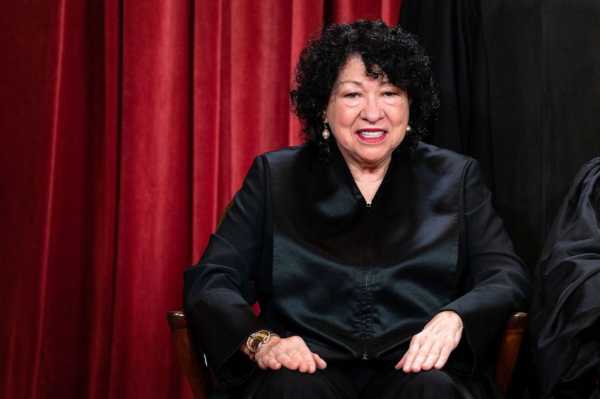
Associate Justice Sonia Sotomayor during the formal group photograph at the Supreme Court in Washington, DC, Oct. 7, 2022.Eric Lee/Bloomberg via Getty Images
The schools say alternatives to affirmative action, such as a focus on socioeconomic status, simply aren't as effective and that if the court strikes down the practice, it will mean fewer minorities on campuses nationwide.
"We would like to match the demographics of this generation as best we can because when we're not doing that, we know we're just missing talent," Fordham University President Tania Tetlow said in an interview last year.
In the most recent Supreme Court decision to uphold affirmative action, from 2003, then-Justice Sandra Day O'Connor famously predicted that in 25 years "the use of racial preferences will no longer be necessary" in America.
Sotomayor has said she agrees that affirmative action can't be used forever, but told ABC News in 2014, "You got to find other ways to improve the selection process, but we haven't found those ways just yet."
For his part, Thomas insists the program never should have been allowed to begin with. "Show me in the Constitution where you get a right to separate citizens based on race," he said in a 2020 documentary, "Created Equal."
"What we've become comfortable with is thinking there is some good discrimination and some bad discrimination. Well, who gets to determine that?" Thomas said.
Both justices share a belief in equality and the power of education, but both are now deeply divided on the law and the future of affirmative action in America.
Sourse: abcnews.go.com
